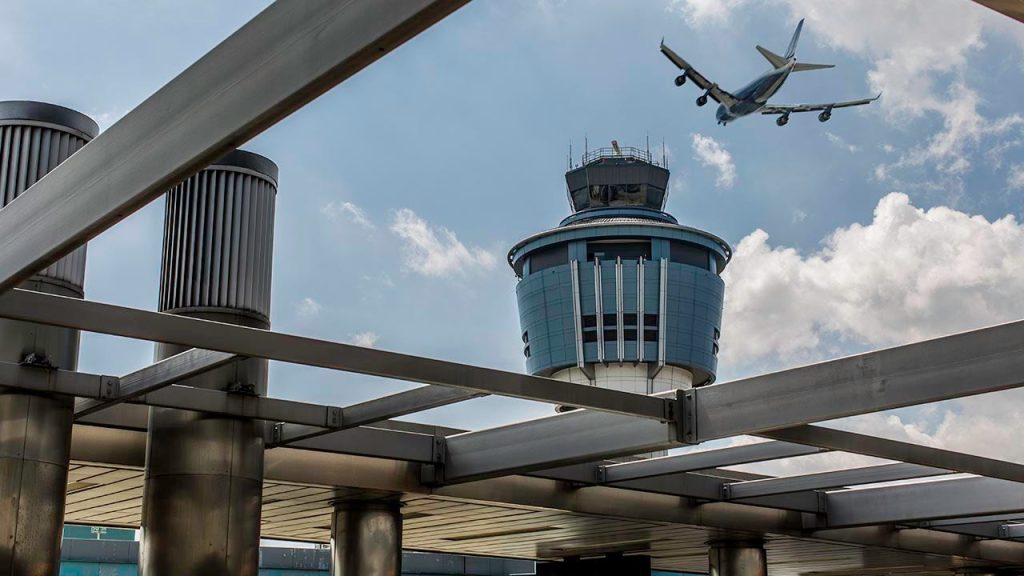A Minor Collision at LaGuardia: When Two Delta Connection Jets Met on the Taxiway
In the bustling environment of New York’s LaGuardia Airport, an unexpected encounter between two aircraft occurred on a Wednesday evening, highlighting the delicate choreography required in airport ground operations. At approximately 9:58 PM, two Canadair CRJ-900 regional jets operated by Endeavor Air, a Delta Air Lines subsidiary, were involved in what Delta described as a “low-speed collision” on one of the airport’s taxiways. One aircraft had just arrived from Charlotte, North Carolina (flight 5047), while the other was preparing to depart for Roanoke, Virginia (flight 5155). According to preliminary information, the departing aircraft’s wing made contact with the fuselage of the arriving aircraft—a gentle bump by aviation standards, but still a serious operational incident that required immediate attention from ground crews and airline staff.
The human impact of the incident was fortunately minimal, with only one flight attendant reporting a minor injury. Following standard safety protocols, the crew member was assessed by emergency medical technicians at the scene before being transported to a nearby hospital as a precautionary measure. No passengers were injured during the incident, which speaks to the low-speed nature of the collision and the effectiveness of safety procedures in place. However, the psychological impact of such an event shouldn’t be underestimated—passengers who expected a routine flight instead found themselves involved in an unusual airport incident that disrupted travel plans and potentially created anxiety about air travel safety.
The response from both the airport authorities and Delta Air Lines demonstrated the well-rehearsed contingency plans that activate when such incidents occur. Passengers from both aircraft were efficiently evacuated on the taxiway itself and transported back to Terminal C by bus—a process that, while inconvenient, prioritized passenger safety and comfort. Delta representatives quickly implemented their customer care protocols, providing those affected with food and beverages while they waited for further information. For passengers whose travel plans were significantly disrupted, the airline arranged hotel accommodations and rebooking options, attempting to minimize the inconvenience caused by this unexpected event. These measures reflect the airline industry’s recognition that beyond the mechanical aspects of aviation, addressing the human experience of travel disruptions is equally important.
What makes this incident particularly interesting is how it occurred despite the sophisticated ground control systems in place at major airports like LaGuardia. Modern airports utilize complex traffic management systems, ground radar, and communication protocols designed to prevent exactly this type of occurrence. The Port Authority of New York and New Jersey, which oversees LaGuardia’s operations, reported that the incident did not impact wider airport operations—a testament to the resilience built into airport systems. However, the collision still raises questions about potential blind spots in ground operations procedures, especially during evening hours when visibility may be reduced. Delta’s commitment to working with the Federal Aviation Administration (FAA), the National Transportation Safety Board (NTSB), and the Port Authority to review the incident demonstrates the industry’s approach to using even minor incidents as learning opportunities to improve safety.
This collision at LaGuardia is not an isolated incident in the broader context of aviation operations. Similar events have occurred at other airports, including a recent incident in Seattle involving a Delta Airlines plane and a Japan Airlines aircraft. These occurrences, while relatively rare considering the volume of daily flights worldwide, serve as reminders of the complex logistical dance that unfolds at every airport. Each aircraft movement must be precisely coordinated with dozens of others, with minimal margin for error. The human factors involved—from pilot attention and ground controller instructions to the design of taxiway systems and communication protocols—all play crucial roles in preventing such incidents. When these systems occasionally fail, as they did at LaGuardia that Wednesday night, the industry’s response becomes a case study in operational safety management.
Morgan Durrant, a Delta spokesperson, captured the company’s perspective succinctly when stating, “Delta will work with all relevant authorities to review what occurred as safety of our customers and people comes before all else. We apologize to our customers for the experience.” This statement encapsulates the dual priorities that airlines must balance: maintaining the highest safety standards while acknowledging the impact on customer experience when things go wrong. As the investigation into this taxiway collision continues, it will likely yield insights that contribute to the aviation industry’s continuous improvement process—a process that has made commercial air travel one of the safest forms of transportation despite the occasional bump on the ground. For the passengers who experienced this unexpected ending to their flights at LaGuardia, the incident becomes a travel story to tell—one that fortunately ended with nothing more serious than a delay and perhaps a newfound appreciation for the complexities of airport operations.


